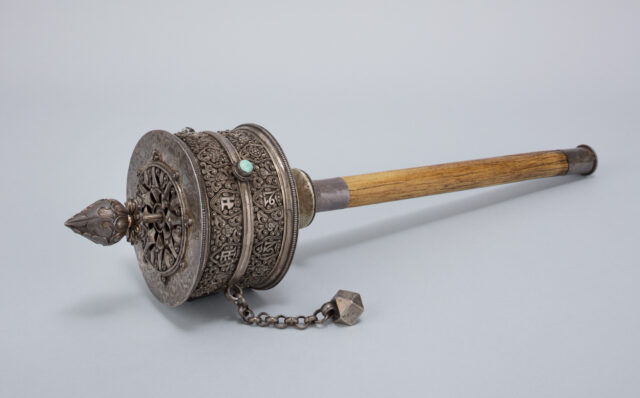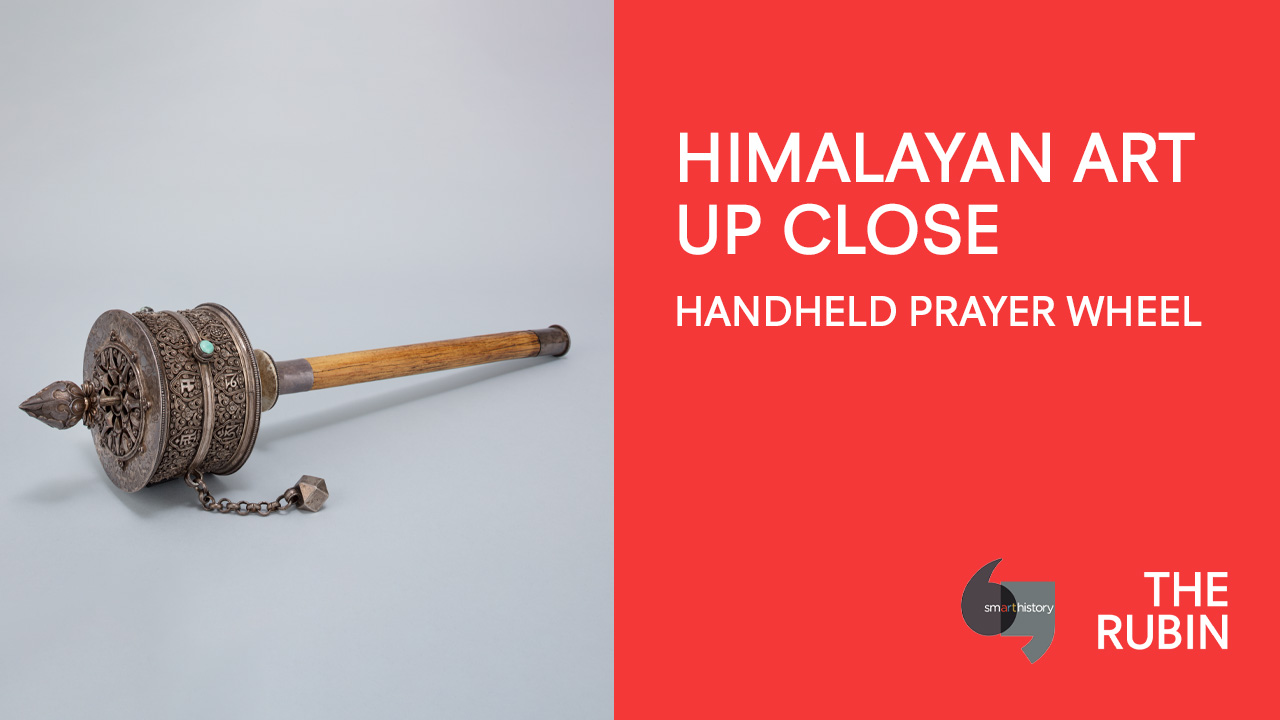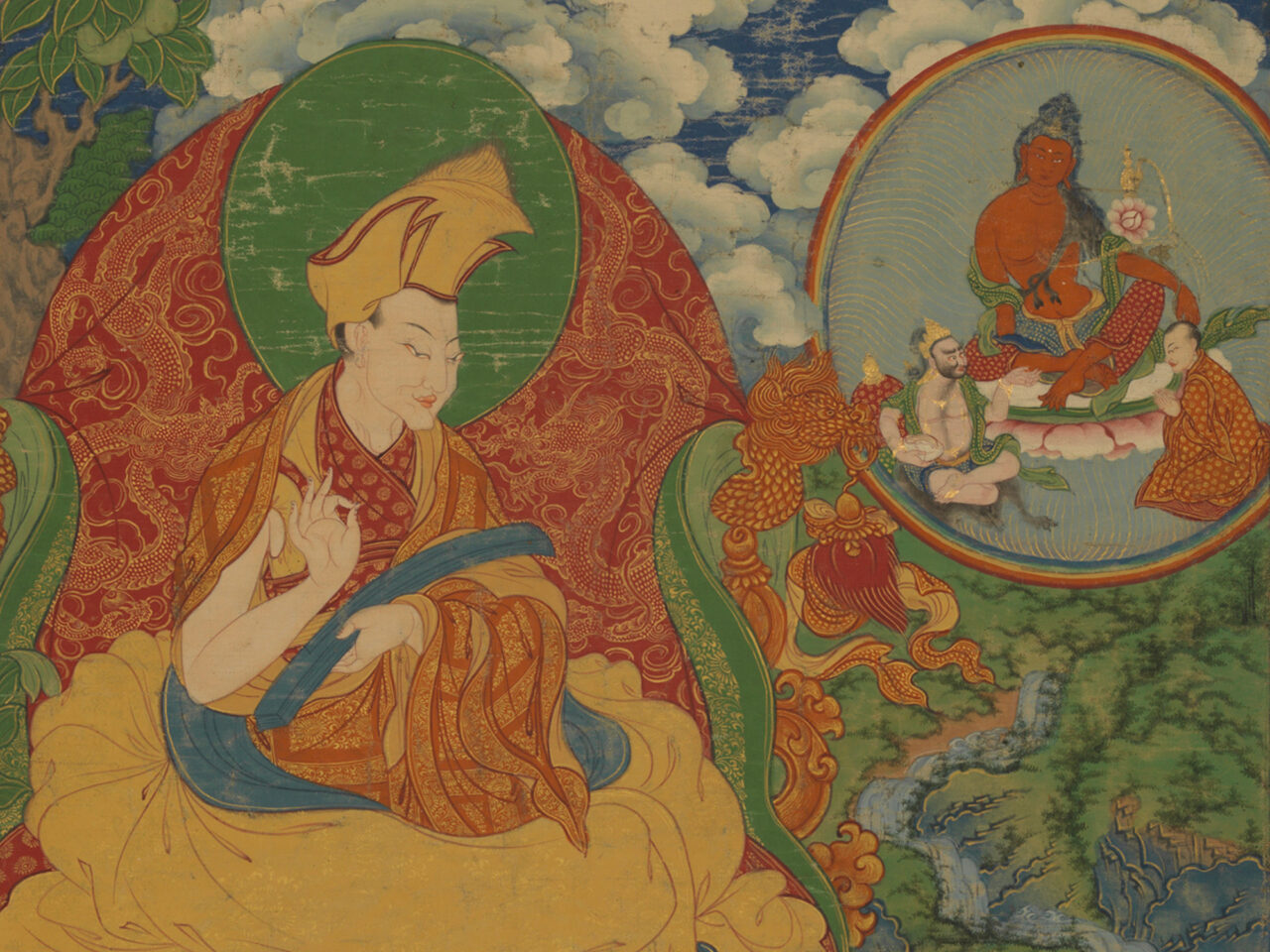Handheld Prayer Wheel
- Location
- Central Tibet
- Date
- early 20th century
- Material
- Silver, wood
- Catalog Number
- SC2012.7.2
- Collection
- Rubin Museum of Art
- Provenance
- Gift of Shelley and Donald Rubin


Prayer wheels are ritual implements containing written prayers and mantras. They can be as large as buildings or, like this one, fit in the palm of a hand. In this example the cylinder that houses mantras is turned clockwise with the help of the counterweight. This process is believed to release the mantras and benefit the person turning the wheel, all living beings, and the environment. The cylinder is called the relics depository because mantras are considered a sacred material that powers the wheel. In Tibetan Buddhist traditions, mantras are believed to be part of the Buddha’s teachings, and by extension, considered sacred dharma relics. Tibetan Buddhist images of deities are usually consecrated by writing mantras on the reverse of the painting or inserting them into the sculpture. This consecration ritual establishes the deity in the image.

Rubin Museum of Art, "Handheld Prayer Wheel - A Video Analysis from Smarthistory and the Rubin Museum," YouTube, April 5, 2024, 6:32, https://www.youtube.com/watch?v=sS8rUGVV-8Y.

In Himalayan regions and culturally connected regions of Inner Asia the main religious traditions are Buddhism, Hinduism, and Bon.
Explore theme